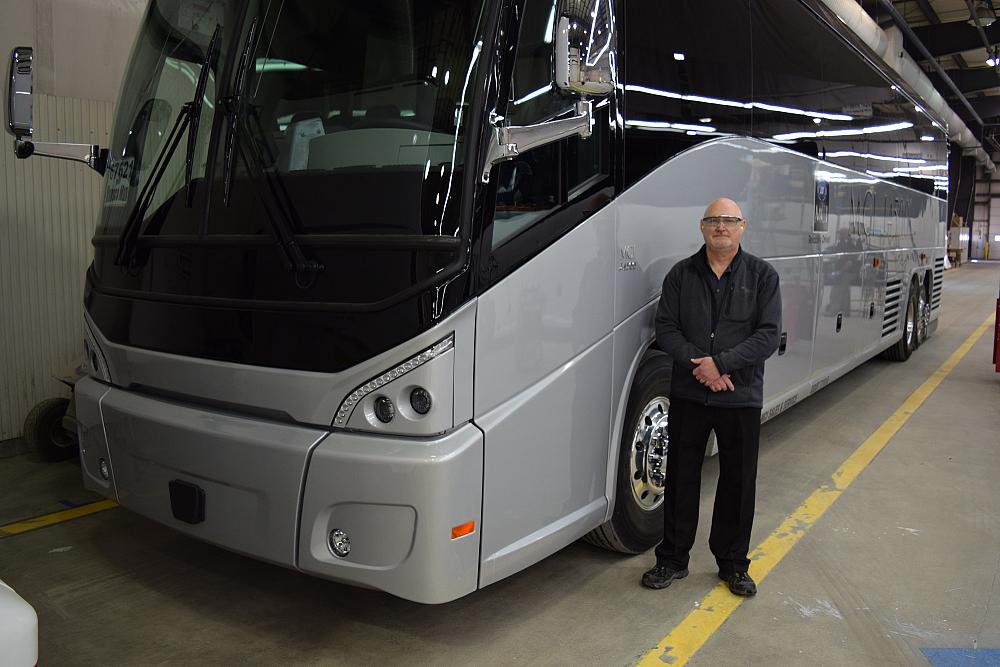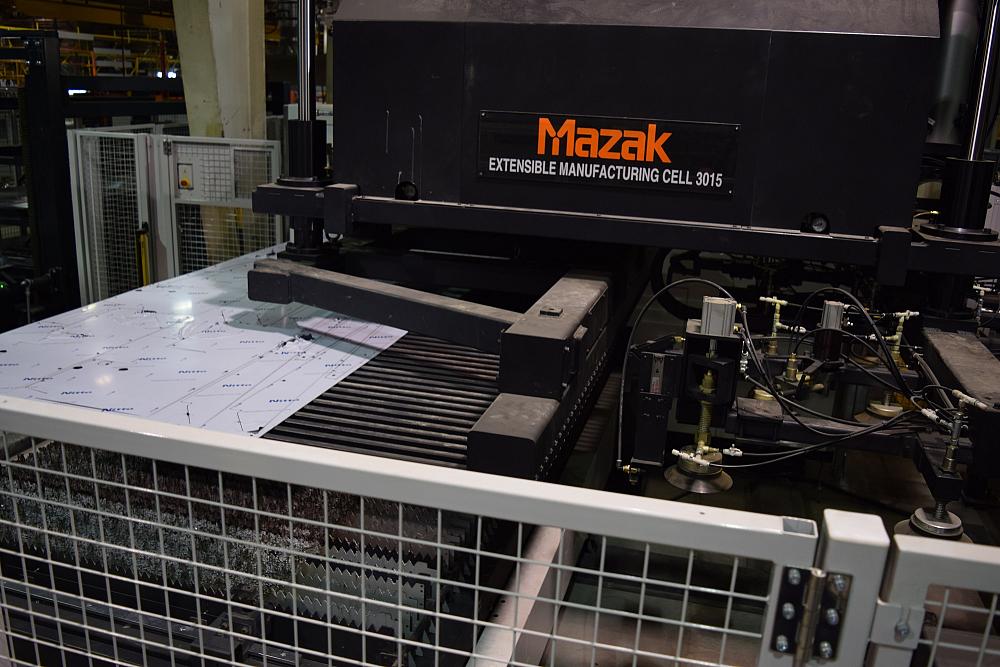Editor
- FMA
- The Fabricator
- FABTECH
- Canadian Metalworking
Business Profile: MCI
Quality At Source: MCI’s change management strategy delivers value
- By Rob Colman
- June 1, 2016
- Article
- Fabricating
When Motor Coach Industries (MCI) was acquired by New Flyer on Dec. 18, 2015, the two companies came together to form a family of nearly 5,000 team members supporting over 42,000 transit buses and 28,000 motor coaches in operation daily throughout the U.S. and Canada.
MCI is North America's leading manufacturer of intercity coaches, serving charter and tour operators; line-haul and scheduled-service operators, transit agencies, and conversion companies.
Like New Flyer, MCI has spent the last five years transforming itself using tried-and-true operations management techniques. Although the two have employed slightly different methods, the results are similar. Both Winnipeg-based operations have realized some tremendous efficiencies, reducing fabrication outsourcing and increasing its employee base.
Quality Leadership
Jim Macdonald, executive director of engineering and quality, noted during a keynote address at the Metalworking Manufacturing & Production Expo Winnipeg in March that the success of the company’s production improvement program would not have been possible if the organization hadn’t followed three fundamentals.
“You need a business plan, you need a structured approach to deploying that plan, and management has to engage people at every level of production,” said Macdonald. “The ownership of the organization drives it; it cannot be a grassroots approach. Leadership has to champion the effort.”
QAS Defined
MCI used a Quality At Source (QAS) program to transform its operations. According to Macdonald, it has given the company the ability to be far more efficient and to understand and control the business. It has worked so well that MCI is reaching out to its own suppliers through a new supplier development engineering team to help them understand the importance of a production system like QAS in driving value.
The essence of QAS is that the operator is able to produce product and do the job correctly the first time. By implementing a system that makes that success consistently repeatable, a company can meet its quality requirements every time. All work done has to be achieved with due thought given to — in this order — safety, people, quality, responsiveness, cost, and environment (SPQRCE).
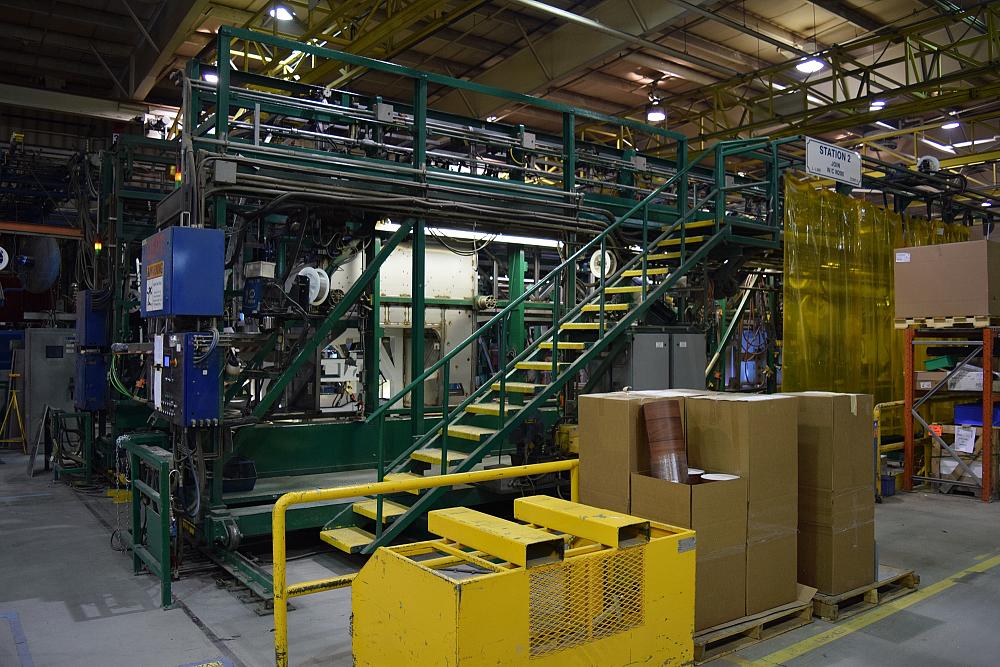
The initial welding together of the basic shell of a coach requires custom bays like this one, where it is possible to work on both ground level and above.
MCI prides itself on communicating goals and maintaining that communication regularly. This means planning face time every month, at every level. The vice president holds a monthly stand-up meeting to review metrics. Every week supervisors bring their teams together for reviews. And every day team leaders run meetings to review the last day’s work and the present day’s challenges and expectations.
“The key point in all of this is that these are in-person, personal interactions,” said Macdonald.
MCI uses visible andon systems to resolve issues quickly on the shop floor. They have also created kitting systems so that assembly line staff are sure to have the correct parts on hand for the job they are required to do.
A Measured Plan
None of this happens by magic, of course. MCI used a system it calls a “green road” to achieve its goals.
“It is our version of problem solving and corrective action,” Macdonald explained. “What we did early on in our program was we recognized that to control processes, we needed to control the highest-risk ones. We literally went up to every station and time-studied every job to understand all the work we do in all of our plants.”
As primary manufacturing superintendent, Danny Dear has seen how much benefit can come from such a detailed approach to operations.
“Our processes were not very well-defined before,” said Dear. “Over the years, people had added up setup times and run times based on not very good data. We did a large number of time studies, a lot of measurements of the actual work, breaking it down into what is required to set up the equipment and what it takes to run different parts based on their complexity. Because we produce thousands of different parts, we had to choose a representative sample of both complex and simple parts to come up with the most accurate calculations. Armed with this information, we were able to move forward and better plan our resources, our activities, and our expectations.”
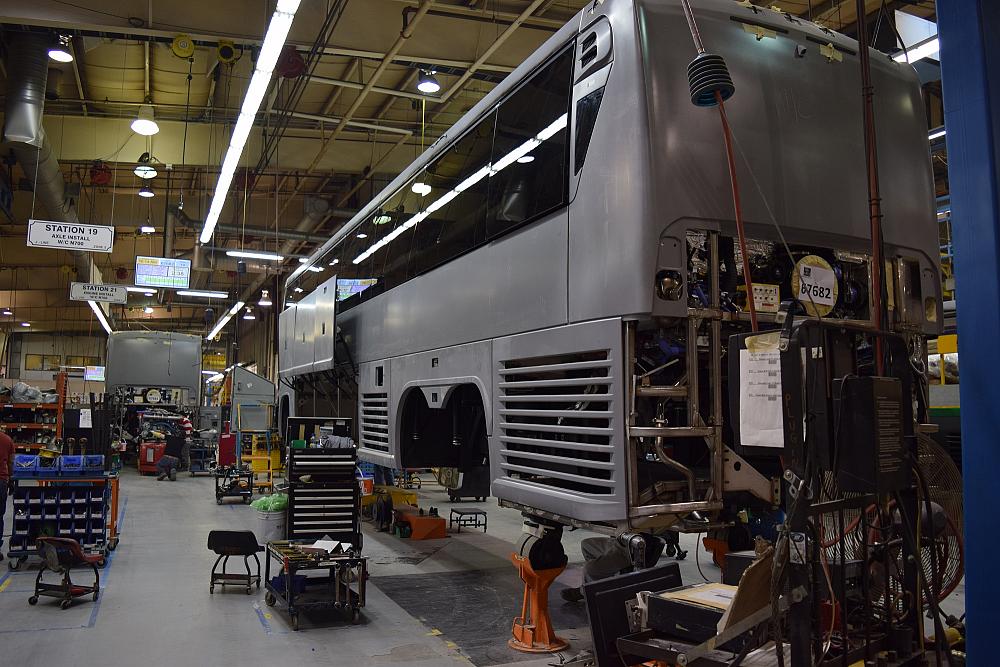
At each stage of the building process, employees are provided with kits that include all items required to complete the job at that station.
MCI’s primary manufacturing team comprises about 85 people, covering primary processing, small-parts welding, and a small-parts paint area. Once the team had a sense of how to best calculate their processes, they went back to all of the parts they make and recalculated their standard.
“It was a really big undertaking from a manufacturing engineering point of view,” said Dear.
The results of these recalculations made a difference quite rapidly.
“Probably six months after QAS was implemented, we saw that it would be possible to cancel certain subcontract requisitions and to hire people in our own operations,” said Dear. “There were certainly some efficiency gains, but the biggest gain was for us to have a tool to properly measure the work and plan what is coming in for us to do.”
A Level Load Approach
Because of the wide variety of design specifications MCI receives from its broad customer base, some coach orders come with a heavier work load than others. However, the shop’s better understanding of each process has allowed the planning department to introduce a “level load” approach to the primary manufacturing division.
“Planning tries to maintain a more level operations schedule so that we don’t experience overwhelming spikes of work and end up with past-due jobs,” Dear explained. “To manage this, they will pull work forward to smooth out potential spikes.”
The potential variations on a coach are surprisingly broad. The company builds around eight models, but purchasers have the option of many engine types and interior and exterior variations on each model. Every build is a custom project.
Having the right numbers has changed the way the team views its operations.
“Years ago people used to relate everything back to the number of jobs you had due,” said Dear. “Now we relate more to hours because a job could be 10 minutes or 3 hours. Now we are able to say we have 50 hours of past-due work or zero hours. It just has more meaning, and you can better manage your resources.”
Primary Manufacturing
The primary manufacturing department works with aluminum, stainless, and all forms of mild steel from very thin to about 3/8-inch sheet. All shop equipment is geared to higher-volume, thinner sheet steel. Two lasers (one 4-kW fiber and one 4-kW CO2) and a shear/punch combination machine dominate the sheet processing area.
The company also runs a laser tube cutter and two NC tube benders to process all of the copper for the coach, as well as all the square tubing and structural round and aluminum tubing.
The most recent purchases for the shop floor were a Mazak 4-kW fiber laser with a storage tower and a second Prima Power electric press brake. These were both installed in 2015.
“Having accurate standards, and the ability to accurately cost our parts internally, made it easier to explain to management how investing in this equipment would allow us to produce more parts in-house and speed up our payback,” Dear explained. “And of course the fiber technology makes a lot of sense with the material we’re geared to produce. It is very beneficial in the thinner materials. Our cutting speeds on the fiber can be anywhere between two and six times as fast as CO2 cutting.”
MCI brought a lot of work back in-house even before investing in the new machines. However, with the new equipment the department has improved how it uses its materials.
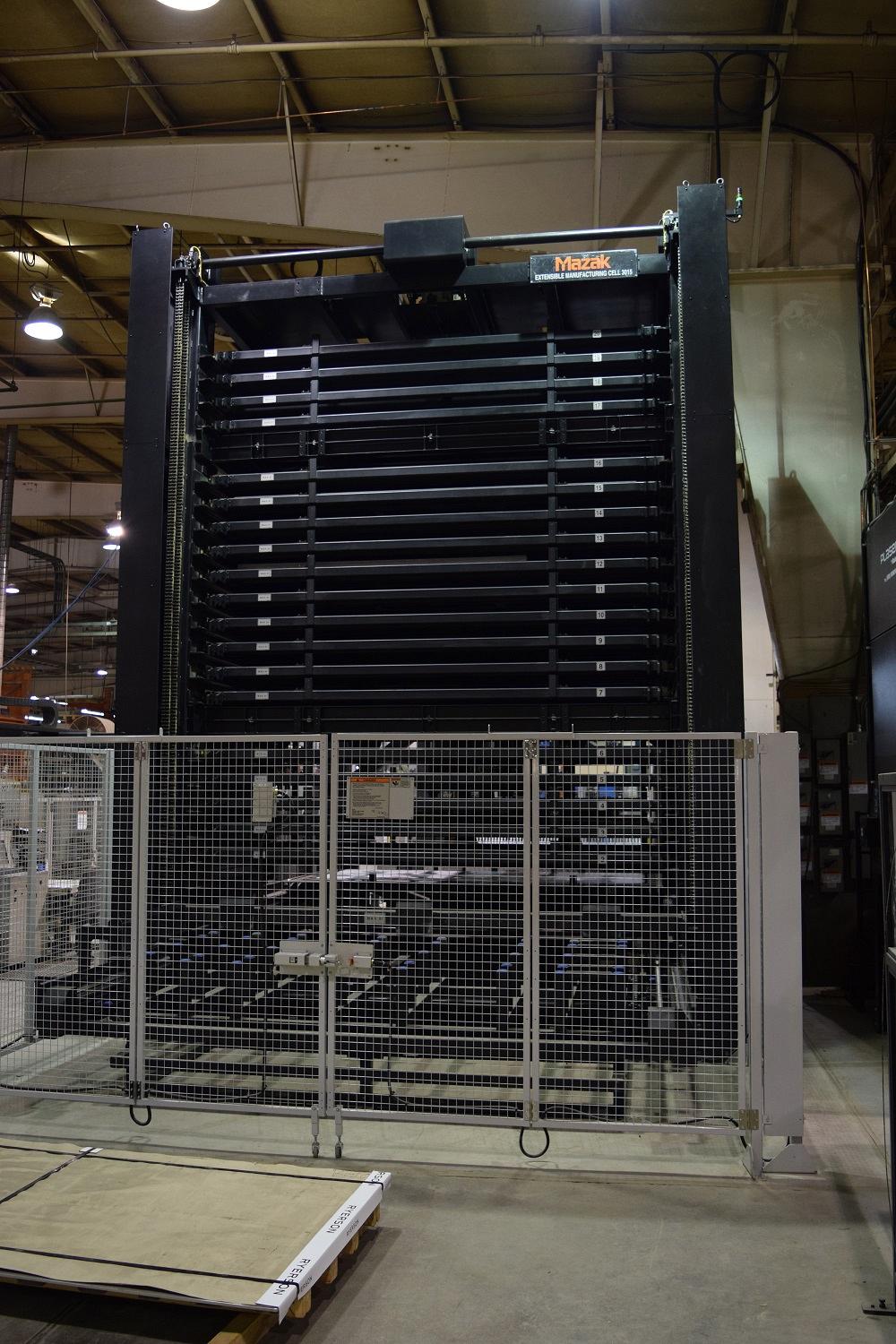
The 20-pallet tower MCI invested in alongside its fiber laser cutting system allows the company to run the machine lights-out and remove pallets during the day to be sorted elsewhere on the shop floor.
“You can buy something from a supplier that uses its material very well and can underprice you because they make use of every last inch of material,” said Dear. “Material costs far outweigh labour costs, so how we were able to start nesting parts much more efficiently helped create real gains. We have improved our material use by as much as 15 per cent. We started nesting parts around the clamps in our older laser and within cutouts of parts. We did a lot of work ensuring we had filler parts that could use these gaps, as well as using common-line cutting when possible.”
Dear said that nesting has been a real trial and error process for his team over the past year.
“You have to test what will and won’t work, looking at where your grates are, how the machine works, and what is required to take the parts out of the cut sheet,” he explained. “For instance, you can tab a part in multiple areas to ensure it doesn’t fall out of the skeleton, but the poor guy who is trying to take it apart might need four hammers and three chisels to get it out without ruining the part. You have to make sure the tabs don’t interfere with the ability to twist the part out of the skeleton. But our programmers are getting good at this.”
Shear Power, Efficient Choices
One of the interesting challenges Dear has to manage in his shop is the choice between using one of his two lasers or the Prima Power Shear Genius® he has on the shop floor. MCI bought its most recent Prima electric press brake on the strength of its experience with the shear/punch combo and its first Prima electric press brake, both of which were bought three years ago.
The electric press brakes made a lot of sense because of the type of work MCI’s primaries produce.
“We have a lot of small parts, and with the electric press brake, you get a little more speed than with a hydraulic brake, and it costs less to run,” Dear noted.
The shear/punch combo is a different matter. It is equipped with a Night Train automated table that stores material. The challenge is finding the right parts to run on it.
“It takes less time to punch than burn a hole, and less time to shear a line as well,” Dear said. “Parts also come out unnested, which also saves time. On the other hand, any time you have a bend relief in a part, you can’t punch a thin-enough line to give you that bend relief. You also need to set up and maintain tooling on the punch, which isn’t necessary on a laser.”
The biggest challenge is determining the design approach the company wants to take with each part, said Dear.
“We need to think in terms of square and round profiles when designing to use the punch/shear combo,” he explained. “If our designers are thinking in terms of profile cuts, which you use with a laser, then you can end up behind the eight ball in terms of production.”
MCI now runs the Shear Genius about two shifts a day, and the team is continually looking at which parts can be most efficiently processed on the system.
Training for the Future
MCI is determined to remain competitive and, with New Flyer, wants to become the employer of choice. The challenge is finding the right people and training them to the required level in a shop that makes a tremendous variety of parts on a tight timeline.
“Training is certainly easier when you have 20 or 30 parts you are always making,” said Dear. “But we make thousands, using many different machines and types of tooling. That is the challenge. You can teach someone to drive, but you want them to be more like a race car driver.”
MCI is working to meet this challenge throughout its operations with the Training Within Industry (TWI) program. This is a program developed in the U.S. in the 1940s and promoted by Canadian Manufacturers & Exporters (CME). CME provides certified training — essentially a train-the-trainer program that breaks every job down into distinct steps that can be easily explained. MCI has put some of its top people through this training, and everyone has benefited.
“We need to harness the knowledge of our established people,” said Dear. “We need this kind of succession planning.”
As Macdonald noted, “You don’t get to have a market-leading product unless you apply excellence at all operational levels.” Macdonald identifies this as a continuous effort to make sure product designs are reliable, well-tested, and that a company’s employees are the best that they can be.
With a manufacturing system that controls and continuously improves operations, along with its training efforts, MCI looks to be a competitive force for a long time to come.
Editor Robert Colman can be reached at rcolman@canadianfabweld.com.
Motor Coach Industries, 866-624-2622, www.mcicoach.com
About the Author

Rob Colman
1154 Warden Avenue
Toronto, M1R 0A1 Canada
905-235-0471
Robert Colman has worked as a writer and editor for more than 25 years, covering the needs of a variety of trades. He has been dedicated to the metalworking industry for the past 13 years, serving as editor for Metalworking Production & Purchasing (MP&P) and, since January 2016, the editor of Canadian Fabricating & Welding. He graduated with a B.A. degree from McGill University and a Master’s degree from UBC.
subscribe now


Keep up to date with the latest news, events, and technology for all things metal from our pair of monthly magazines written specifically for Canadian manufacturers!
Start Your Free Subscription- Trending Articles
Aluminum MIG welding wire upgraded with a proprietary and patented surface treatment technology

CWB Group launches full-cycle assessment and training program

Achieving success with mechanized plasma cutting

Hypertherm Associates partners with Rapyuta Robotics

Brushless copper tubing cutter adjusts to ODs up to 2-1/8 in.

- Industry Events
MME Winnipeg
- April 30, 2024
- Winnipeg, ON Canada
CTMA Economic Uncertainty: Helping You Navigate Windsor Seminar
- April 30, 2024
- Windsor, ON Canada
CTMA Economic Uncertainty: Helping You Navigate Kitchener Seminar
- May 2, 2024
- Kitchener, ON Canada
Automate 2024
- May 6 - 9, 2024
- Chicago, IL
ANCA Open House
- May 7 - 8, 2024
- Wixom, MI













